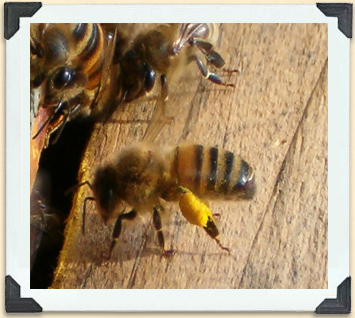Life in a Hive

The worker bee returns to the hive with very full pollen baskets.
© Ontario Beekeepers Association, Technology Transfer Program
Foraging
All bees, except the queen, depend on flower pollen as a protein source and nectar (a sweet liquid found in flowers) as an energy source. At midlife, it's the worker bee's job to fly away from the hive to find flowering plants and return with nectar and pollen to feed her hive mates, including the larvae. Bees use special dances to tell other foragers where to find good sources of nectar and pollen.
This is an important but dangerous task. Worker bees will continue this job until they eventually die, at about six weeks old.






